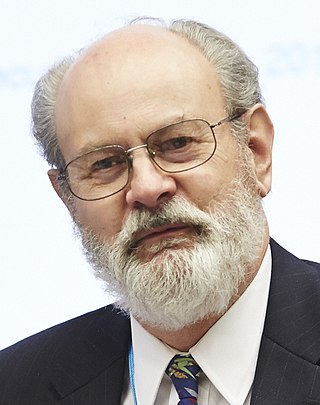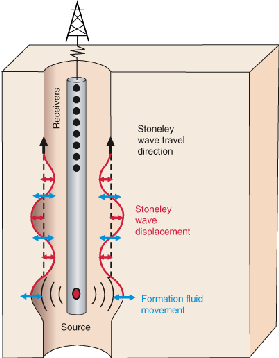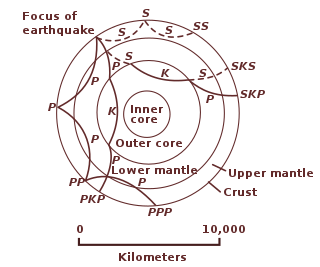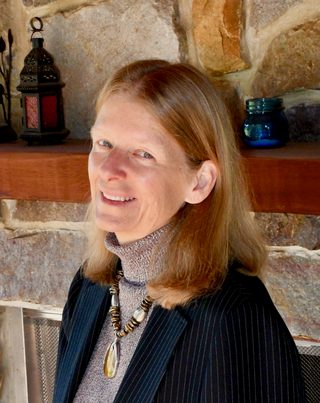
Geophysics is a subject of natural science concerned with the physical processes and physical properties of the Earth and its surrounding space environment, and the use of quantitative methods for their analysis. Geophysicists, who usually study geophysics, physics, or one of the earth sciences at the graduate level, complete investigations across a wide range of scientific disciplines. The term geophysics classically refers to solid earth applications: Earth's shape; its gravitational, magnetic fields, and electromagnetic fields ; its internal structure and composition; its dynamics and their surface expression in plate tectonics, the generation of magmas, volcanism and rock formation. However, modern geophysics organizations and pure scientists use a broader definition that includes the water cycle including snow and ice; fluid dynamics of the oceans and the atmosphere; electricity and magnetism in the ionosphere and magnetosphere and solar-terrestrial physics; and analogous problems associated with the Moon and other planets.

William Maurice "Doc" Ewing was an American geophysicist and oceanographer.

The Society of Exploration Geophysicists (SEG) is a learned society dedicated to promoting the science and education of exploration geophysics in particular and geophysics in general. The Society fosters the expert and ethical practice of geophysics in the exploration and development of natural resources, in characterizing the near-surface, and in mitigating earth hazards. As of November 2019, SEG has more than 14,000 members working in more than 114 countries. SEG was founded in 1930 in Houston, Texas but its business office has been headquartered in Tulsa, Oklahoma since the mid-1940s. While most SEG members are involved in exploration for petroleum, SEG members also are involved in application of geophysics methods to mineral exploration as well as environmental and engineering problems, archaeology, and other scientific endeavors. SEG publishes The Leading Edge (TLE), a monthly professional magazine, Geophysics, a peer-reviewed archival publication, and Interpretation, a peer-reviewed journal co-published by SEG and the American Association of Petroleum Geologists.
Jon F. Claerbout is an American geophysicist and seismologist. He is the Cecil Green Professor Emeritus of Geophysics at Stanford University. Since the later half of the 20th century, he has been a leading researcher and pioneered the use of computers in processing and filtering seismic exploration data, eventually developing the field of time series analysis and seismic interferometry, modelling the propagation of seismic waves.
Petrophysics is the study of physical and chemical rock properties and their interactions with fluids.
Ronald M. Clowes, CM is a professor specializing in seismic and other geophysical studies of the Earth's lithosphere. For his work he has been appointed a member of the Order of Canada.
There are two kinds of seismic body waves in solids, pressure waves (P-waves) and shear waves. In linear elasticity, the P-wave modulus, also known as the longitudinal modulus, or the constrained modulus, is one of the elastic moduli available to describe isotropic homogeneous materials.

Paul G. Richards is an English-born, American seismologist who has made fundamental contributions to the theory of seismic wave propagation and in methods to understand how the recorded shapes of seismic waves are affected by processes of diffraction, attenuation and scattering. He is the Mellon Professor of the Natural Sciences at Lamont–Doherty Earth Observatory of Columbia University.

A Stoneley wave is a boundary wave that typically propagates along a solid-solid interface. When found at a liquid-solid interface, this wave is also referred to as a Scholte wave. The wave is of maximum intensity at the interface and decreases exponentially away from it. It is named after the British seismologist Dr. Robert Stoneley (1894–1976), a lecturer in the University of Leeds, who discovered it on October 1, 1924.
Michael Schoenberg (1939–2008) was an American theoretical geophysicist noted for his fundamental contributions to the understanding of anisotropy in the real earth and its application to the determination of texture, fracture porosity, and flow properties of reservoir rocks.
The Eni Award is a prize awarded by the Italian oil and gas company Eni with the aim of encouraging better use of energy sources and increased environmental research. The strict award guidelines and the notable names on the selection committee make Eni a coveted award. List of Eni award winners include Nobel laureates like Harold W. Kroto and Alan Heeger.

The following outline is provided as an overview of and topical guide to geophysics:
Robert E. Sheriff was an American geophysicist best known for writing the comprehensive geophysical reference, Encyclopedic Dictionary of Exploration Geophysics. His main research interests included the seismic detailing of reservoirs, in 3-D seismic interpretation and seismic stratigraphy, and practical applications of geophysical methods. Hua-Wei Zhou, Department Chair of the Department of Earth and Atmospheric Sciences, said about Sheriff: “…a giant figure in the world of exploration geophysics… When I think about Bob, a number of key words pop up in my mind: kindness, honesty, hardworking, seeking perfection, generosity and wisdom.”
Stanley Martin Flatté was a particle physicist and expert on wave propagation in atmospheric optics, ocean acoustics, and seismology.

Mrinal Kanti Sen, an Indian-American geophysicist is the John A. and Katherine G. Jackson Chair in Applied Seismology at the Jackson School of Geosciences of the University of Texas at Austin. He holds joint appointment with the Institute for Geophysics (UTIG) and the Department of Geological sciences (DGS). Since 2016, he has been serving as the head of the energy research division at UTIG. He has been a pioneer in the field Seismic Wave Propagation and Inverse Theory applied to Geophysical Problems. He has published more than 180 papers, and two books, and supervised over 50 graduate students. As an author, he is widely held in libraries worldwide. He was recognized by the Society of Exploration Geophysicists in 2015 for pioneering development and application of global optimization methods in geophysical inversion.
Tatiana B. Yanovskaya was a Russian geophysicist and educator.
Jerry M. Harris is an American geophysicist and the Cecil and Ida Green Professor of Geophysics at Stanford University. Harris established the Stanford Wave Physics Lab, which investigate the physics of seismic and electromagnetic waves in complex media. He was co-founder of the Stanford Global Climate and Energy Project and the Center for Computational Earth and Environmental Science.

Laura J. Pyrak-Nolte is an American geophysicist who is Distinguished Professor of Physics and Astronomy at Purdue University. She is the former President of the International Society of Porous Media and former President of the American Rock Mechanics Association. In 2020 Pyrak-Nolte was awarded the Society of Exploration Geophysicists Reginald Fessenden Award. She is a Fellow of the American Geophysical Union.

Gabor Korvin is a Hungarian Mathematician. He served as a professor at the Department of Earth Sciences, King Fahd University of Petroleum and Minerals. His main areas of research interest include fractal geometry in the earth sciences, statistical rock physics and mathematical geophysics. He is a well-known Applied Mathematician, Geophysicist, Petrophysicist, Historian. At KFUPM he was Coordinator of the Reservoir Characterization Research Group. As Professor, he taught Reservoir Characterization, Seismic Stratigraphy, Petrophysics & Well logging, Solid Earth Geophysics, Geoelectric Exploration, Reflection Seismology, Inverse Problems, Geostatistics and Reservoir Characterization. Fractal Models in the Earth Sciences by Gabor Korvin was one of the earlier books on the application of Fractals in the Earth Sciences.








